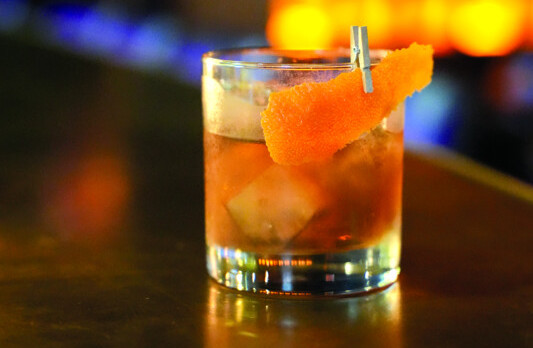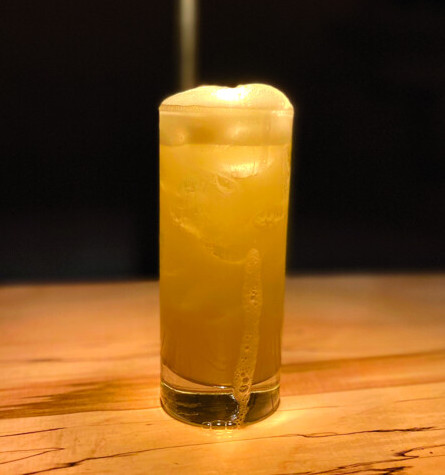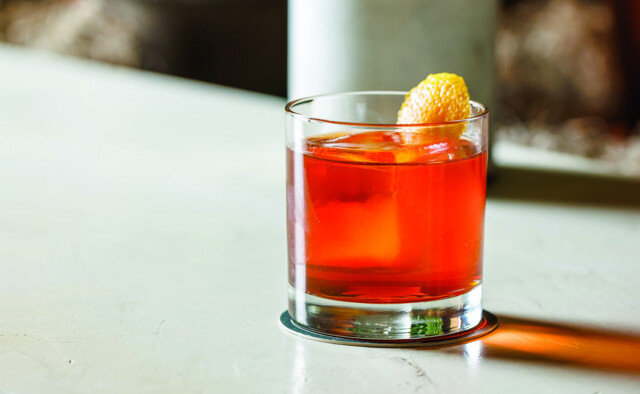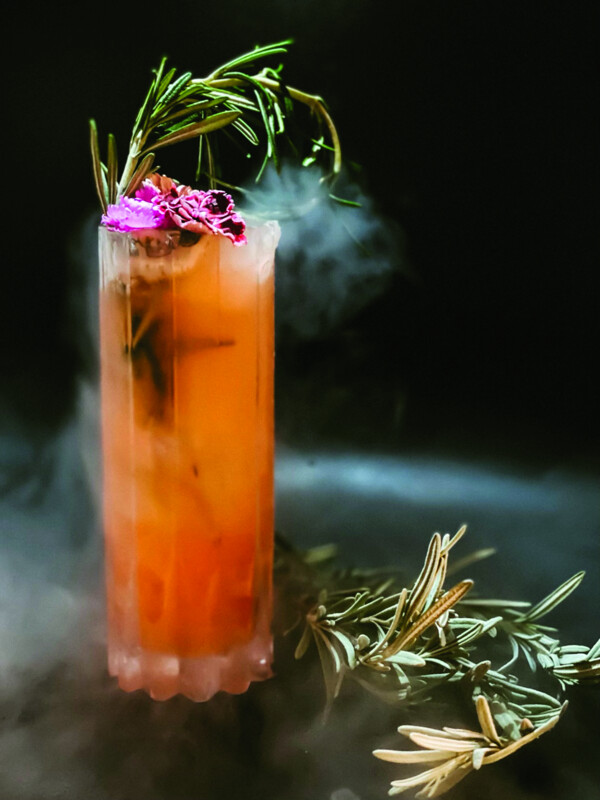
Since 2016 the American Single Malt Whiskey Commission, a group of nearly 100 distillers from across the country, has been working toward the goal of getting the U.S. Treasury Department’s Alcohol and Tobacco Tax and Trade Bureau (TTB) to define and recognize American single malt whiskey as a specific category. The group’s hard work has paid off: The TTB published the “Proposed Addition of American Single Malt Whiskey to the Standards of Identity for Distilled Spirits” on July 29, 2022. While the TTB hadn’t officially rendered a decision as of press time, it’s a huge move in the right direction for American single malt, as it would ensure that any spirit labeled American single malt is made from 100% malted barley; mashed, distilled, and matured in one distillery; produced entirely in the U.S.; distilled to a proof not exceeding 160; matured in oak casks not exceeding 700 liters; and bottled at a minimum of 40% abv.
The American single malt category is certainly catching on in the broader spirits industry: In November, Diageo acquired Texasbased American single malt producer Balcones Distilling, and in the same month Jack Daniel’s introduced its own take on the category with its Twice Barreled Special Release American Single Malt Finished in Oloroso Sherry Casks ($70 a 750-ml.).
“We’ve always viewed the rise in American single malt as inevitable,” says Mark McLaughlin, co-founder of Old Line Spirits in Baltimore. “It certainly helps that we, as a group of American single malt producers, are on the cusp of defining the first new category of American whiskey in decades. It’s pretty momentous and I think it lends a lot of credence to what we’re doing.”
It certainly is an exciting time to be a producer and fan of American single malt, and as the category continues to gain more recognition, it’s becoming more commonly featured in cocktails at U.S. bars, which will likely only further its reach with consumers. Mike Vacheresse, owner of Travel Bar in Brooklyn, New York, has been a big proponent of American single malts and currently carries 35 of them at his bar. “I love seeing that the young upstarts—like Stranahan’s in Denver—now have stock that’s much older, which means these smaller brands that’ve been producing for a long time can now lower their price, and that’s where cocktails have come in, because now I can afford to make a cocktail with American single malt,” he says. “And now with the major brands entering the category, hopefully American single malt whiskey will take off even more—I think it’s certainly worthy.”

Covering New Ground
American single malt may only be a few decades old, but from its tiny base, it’s the fastest growing U.S. whiskey segment right now. And as bartenders and consumers continue to be drawn to new products and drinking experiences, American single malt is making its way onto more cocktail menus. “I’ve found myself gravitating away from Bourbon-based cocktails because of how sweet the spirit can be when mixed with any other sweet ingredient, but American single malt, being 100% malted barley compared to the 51% corn in Bourbon, has complex earthy notes without the extra sweetness,” says Katie Bruce, owner of The Buttery Bar in Brooklyn, New York. Her cocktail The Season of The Witch ($15) comprises F.E.W. single malt, Green Chartreuse liqueur, pineapple and lime juices, and Scrappy’s Cardamom bitters.
American single malt is indeed distinct from Bourbon, and although it shares characteristics with Scotch, Irish, and Japanese whiskies due to its malted barley base, it’s truly its own style, making it an exciting new frontier for bartenders to explore. “It’s a new category so it’s refreshing for me to be able to use a base spirit that’s made in America but doesn’t have the standard profile of traditional American spirits,” notes Sara Rosales, co-owner and bar manager of Lady Jaye in Seattle. “Its distinct flavor holds up in cocktails and isn’t easily lost to bold amari or rich ingredients, which makes it fun to mix with.” Her drink The Native Local ($15) showcases all locally produced ingredients: Westland American Oak single malt, Woodinville Bourbon, Fast Penny Amaricano amaro, Sennza Finne Summer amaro, and house-made licorice bitters.
“The Pacific Northwest is an ideal state for barley production— it’s even known as the ‘breadbasket’ of America—and I’m lucky to have two amazing single malt distilleries in Seattle with Westland and Copperworks, both of which I feature on my cocktail menu,” Rosales adds. “Westland in particular has been taking great strides to innovate this category.” Her The Earth Says Hello ($15) blends Westland Colere Edition 2, Cocchi Vermouth di Torino, Luxardo Maraschino liqueur, and Scrappy’s Black Lemon bitters, while her Dirty Copper ($15) mixes Copperworks American single malt, Campari aperitif, Cocchi Vermouth di Torino, house-smoked Bigallet China China Amer liqueur, and Fee Brothers Orange bitters.

“American single malts are slowly making their way up in the premium whiskey drinker’s catalog, and it’s a fantastic thing for the style,” says Jared Kelly, head bartender at Merchants Cigar Bar in New York City. “There haven’t been too many to break into the mainstream market yet, but the folks over at Westward Whiskey in Portland, Oregon, have a fantastic version that’s distinct enough to stand on its own while still being fantastic for mixing up a drink.” His Malted American Trilogy ($18) features Westward American single malt, Lairds Straight Apple brandy, demerara syrup, Hella Cocktail Co. Orange bitters, and Angostura bitters. “This is easily my favorite American single malt cocktail so far—the wooded, malty tones of the whiskey play nicely with the apple brandy to make a crisp and smooth cocktail.”
Many bartenders note that American single malt is filling a hole in the whisk(e)y industry. “For a long time it felt like there was Scotch and Irish whisk(e)y on one side and Bourbon and rye on the other, with this big gap in between—American single malt bridges that gap nicely,” says Brett Adams, spirits curator and education manager at Multnomah Whiskey Library in Portland, Oregon. “The category is rather broad at the moment—and hopefully will be into the future—and so you likely won’t be able to just swap it in perfectly in a cocktail previously made for Bourbon, so it’s important to know the spirit you’re using and make tweaks as you go.” His Curio ($25) comprises McCarthy’s Oregon single malt, Carpano Bianco vermouth, Yellow Chartreuse liqueur, and Clear Creek Pear brandy, while his Lucky Charm ($25) features McCarthy’s, Carpano Dry vermouth, Clear Creek Framboise liqueur, Ancho Reyes chile liqueur, cane syrup, lime juice, egg white, and Angostura bitters. “McCarthy’s has a unique richness to it—compared with similarly aged peated Scotches, there’s a dark, fruity, coffee note on the front palate of the McCarthy’s that others don’t possess,” Adams adds. “It’s also different than the dried fruit notes from Sherry barrels and feels more intertwined with the core of the whiskey, unlike the more tacked-on sweetness one gets from finishing in a Port cask.”
Chicago-based distillery Judson & Moore offers its single malt in various classic cocktails at its distillery bar, like the Single Malt and Soda ($11), mixing Judson & Moore single malt with house-made reverse osmosis soda water, and the Rob Roy ($15), blending the single malt with Cocchi Vermouth di Torino and Angostura bitters. “Malt whiskies range from non-smoky to heavily smoked, so give some thought to how the smoke level will influence the overall cocktail,” notes Elise Bergman, who serves as brand manager and co-owns the distillery with her husband and head distiller Collin Moore. “Our single malt is young, delicate, and distillate forward. A portion of the malt is applewood smoked, but the smoke isn’t overpowering.” In Baltimore, Old Line Spirits—co-founded by Mark McLaughlin and Arch Watkins—is showcasing the versatility of American single malt through cocktails at The Ready Room, the distillery’s bar. The American Scofflaw ($12) features Old Line American single malt, Yzaguirre Blanco vermouth, house-made grenadine, lemon juice, and Embitterment Orange bitters, while the Old Charm Square ($11) comprises the single malt, Caffo Miss Dominique brandy, Cocchi Vermouth di Torino, Bénédictine herbal liqueur, and Peychaud’s and Angostura bitters. “The Bourbon and rye space has mostly been explored and people are curious about what this new category can bring to the table, and once they try American single malt they discover that its complexity and versatility is fantastic,” Watkins notes. “Additionally, there’s always something enticing about Americans taking an Old World concept and putting a New World polish on it.”

Flavor Freedom
McLaughlin points out that malted barley can deliver a wide range of flavor profiles depending on how the grain is malted— far wider than corn or rye, he says. “Our American single malts showcase several prominent flavor profiles including caramel, baking spices, toffee, dark chocolate, and a touch of stone fruit,” he adds. “These flavors lend themselves to a wide array of cocktail possibilities.”
Echoing this, Travel Bar’s Vacheresse notes that because American single malt is so new and there’s a lot of experimentation going on, it doesn’t have a set flavor profile. “Bourbon has vanilla and baking spices—I don’t think there are those words yet to decipher what American single malt tastes like, and that’s a great thing in my opinion,” he says. “What really makes it unique is that cereal note from the malted barley, but beyond that the flavors can range drastically. When I taste the Baller from St. George, for example, it has that great ume flavor in it from the finishing in umeshu casks, but it’s not too prominent so it’s easy to build on in a cocktail.” His Triple Plum Highball ($15) mixes St. George Baller, Meletti amaro, Matsui Plum liqueur, and La Croix Beach Plum sparkling water. His Tiki Old Fashioned ($15), meanwhile, features Westland Sherry Cask, Orgeat Works Macadamia Nut syrup, and El Guapo Polynesian Kiss bitters. “I’ve served Westland for many years and the Sherry Cask is a perfect fit for this cocktail,” Vacheresse adds. “It’s just three ingredients but it has really interesting flavors, it’s like a mind tease.”

Stuart Weaver, general manager at Lady Jane in Denver, notes that malt whiskey is his favorite style because of its nuance and diversity of flavor. “The craft and skill of Bourbon comes from the mastery of a rigorous barrel and aging program, along with blending and developing the perfect mashbill—since single malts only consist of barley, the quality of the raw material is paramount and then the distillation process itself shapes the whiskey into what it will become, so there’s nowhere to hide,” he says. “The barley itself makes such a big difference and then you have peated and unpeated styles and a vast array of barrel finishes, and more. There are so many directions you can go in with a cocktail.” Weaver adds that Laws Whiskey House’s Henry Road straight malt whiskey is one of his favorites. “The heirloom Colorado-grown barley in this single malt really shines,” he says. “When I first put my nose to it, I got a face full of bright, fresh green apples followed by delicate spice, notes of caramel and honey, with a lingering finish of pipe tobacco. My immediate thought was that it would be perfect in a spiced apple sour.” His Valley Road (price varies) is said sour: It comprises Laws Whiskey House Henry Road, house-made spiced honeycrisp apple syrup, simple syrup, lemon juice, and Angostura bitters. “The whiskey accentuates the flavor of the apple while providing it with a beautiful malty backbone, and the cardamom, allspice, clove, and cinnamon in the spice blend of the syrup pair perfectly with the caramel, honey, and toasty barrel notes of the whiskey,” Weaver adds. His Time & Again (price varies), meanwhile, mixes the Henry Road with Avuá Amburana Cachaça, diluted maple syrup, and Bittermens Xocolatl Mole bitters for a unique take on the Old Fashioned build.
Tony Bennett, bar director and co-owner at The Alchemist Garden in Paso Robles, California, also notes the variety to be found in American single malt. “Some can be soft and gentle, and others will make you feel like you’re around a campfire,” he says. “Certain malts show more chocolate than others, so bring that out with a subtle dash of bitters as opposed to something heavier. Use darker sweetening agents if it shows more wood influence. Smoky? Try balancing it with something sharp like fresh ginger syrup. There are so many directions a spirit like this can go in.”
St. George Baller is Bennett’s current favorite. “I love its unique characteristics of Japanese influence in American style, which is what this category is all about,” he says. “The lingering smoke beckons you back, just to re-indulge the crisp honey notes on the palate. It’s heavy enough to stand up in acidic cocktails as well as on its own in a spirit-forward variation, somehow maintaining this beautiful floral characteristic reminiscent of classic Japanese whisky.” His Roses Are Red ($18) blends the whiskey with house-made rose hip liqueur, saline solution, and club soda, while lead bartender Edwardo “Lalo” Padilla’s Ouroboros ($16) mixes it with pineapple, lemon, and lime juices, house-made rich blackberry and ginger syrups, and house-made falernum liqueur, topped with a liquid nitrogen float. “The constant growth in whiskey and ever-changing styles in American distillers ensures that we’ll see some talented people working with these products for years to come,” Bennett adds. “I look forward to tasting them all along the way.”


